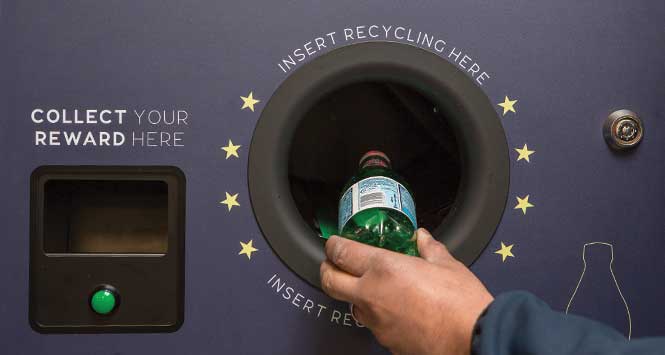Jane Bickerstaffe, Director of the Industry Council for Research on Packaging & the Environment, explains why it’s critical to examine the impact of disposable drinks packaging in context.
With all the current debate around the proposed Deposit Return Scheme, INCPEN, the Industry Council for research on Packaging & the Environment, has recently submitted written evidence to parliament’s Environmental Audit Committee for its inquiry into the effects on the environment of disposable drinks packaging, focusing in particular on the impact of plastic bottles and coffee cups.
In the submission, we explain the benefits of these types of packaging – the protection they provide to products and their ability to meet consumer demand for drinking on-the-go – and not just the negative impact they can have if handled irresponsibly.
We also point out that while packaging is the subject of much media attention, it is not the sole cause of marine or land litter, and that all drinks containers are less than 15% of litter by any measure.
We believe there is a tendency for media commentators to muddle two distinct challenges: the need to increase the quantity and quality of materials recycled; and how to prevent the littering of anything.
In terms of recycling, we say it is vital to consider the environmental impact of the recycling process itself, which in some instances can be more than the value that can be recovered.
The problem of littering, meanwhile, can only be effectively tackled by targeting all types of litter and not just selected items.
Our submission casts doubt on the effectiveness of Deposit Return Systems, particularly in the UK which has hugely increased its recycling rates in the last 20 years and has widespread kerbside collections. The current slight fall in recycling rates was due to a decline in green waste, not paper and packaging.
We welcome this inquiry and hope it will cast some clear light on the reasons why plastic bottles and coffee cups exist and both the positive and negative impact they have. What is essential is that these bottles and cups are considered as part of the wider question of preventing littering. We do not believe that focusing on individual items will have the desired effect.
Key points of the INCPEN submission are:
- Coffee cups and drinks bottles keep drinks safe and in good condition and enable people to have a drink wherever they are.
- Overall all types of containers have pros and cons. Provided they are used appropriately and disposed of responsibly, the choice between them appears to make little environmental difference.
- Used packaging is 5 million tonnes, of which cups are 0.5% and soft drinks bottles and cans 14%. Food waste dwarfs packaging at 7.3 million tonnes.
- The most recent scientific litter survey suggests that charges do not influence litterers. It compared 2016 data with an identical survey in 2014. Supermarket carrier bags though still very few in number (under 0.5%) went up despite the charge on them and huge reduction in use.
- In contrast, with no charge, the number of littered plastics drinks containers and coffee cups went down.
- Whether an item is recyclable or not does not determine whether it becomes litter. The owner of the item decides.
- There is a big difference between a tax on drinks containers and a charge on plastic carrier bags. Unlike a bag charge which is avoidable if you take your own bag – everyone who wants a drink would have to pay a tax.
- Most countries that operate deposit systems have done so for many years and do not have nationwide kerbside recycling. Sweden for example has only 30% kerbside collection coverage so many non-drinks containers do not get recycled.
- Deposit systems do not increase overall recycling rates. When Germany introduced deposits in 2003 the recycling rate fell and did not get back to the same rate for 10 years.







